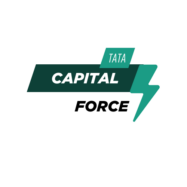Navigating the ever-evolving landscape of financial aid can be daunting. Whether it’s updates on federal student loans, scholarships, or grant programs, staying informed is crucial. Recent shifts in policy and funding have significant implications for students and families planning for higher education.
With new legislation and educational reforms emerging, understanding the latest financial aid news is more important than ever. This article delves into the most recent developments that could affect your ability to fund your education. From changes in interest rates to adjustments in qualification criteria, we’ll cover the essential updates you need to know.
Financial Aid News
Changes in Federal Student Aid Programs
 Recent updates to federal student aid programs reflect significant modifications aimed at increasing accessibility and reducing the burden on borrowers. For instance, the U.S. Department of Education has introduced changes that have expanded eligibility criteria for several aid programs. One notable change involves the Pell Grant program, which now offers increased funding amounts to provide more substantial support to low-income students. Additionally, adjustments to the Federal Student Loan repayment plans emphasize more flexible and income-driven repayment options, thereby aiding borrowers in managing their debt with greater ease.
Recent updates to federal student aid programs reflect significant modifications aimed at increasing accessibility and reducing the burden on borrowers. For instance, the U.S. Department of Education has introduced changes that have expanded eligibility criteria for several aid programs. One notable change involves the Pell Grant program, which now offers increased funding amounts to provide more substantial support to low-income students. Additionally, adjustments to the Federal Student Loan repayment plans emphasize more flexible and income-driven repayment options, thereby aiding borrowers in managing their debt with greater ease.
Impact of Economic Policies on Financial Aid
Economic policies play a crucial role in shaping the landscape of financial aid. Recent legislative measures have aimed to buffer the financial aid system against economic downturns. For example, adjustments to interest rates on federal loans are directly influenced by changes in economic policy. Such measures aim to reduce the financial strain on students and families during periods of economic instability. Furthermore, the introduction of additional financial aid packages by the government in response to economic challenges ensures that financial barriers to higher education remain minimized, thus encouraging continued enrollment despite economic fluctuations.
Key Trends in Financial Aid Availability
The Rise of Private Scholarships and Grants
 Private scholarships and grants are becoming increasingly prominent as alternative sources of financial aid. Many nonprofit organizations, corporations, and private foundations are stepping up to provide financial assistance, focusing on underserved populations and those with specific talents or academic interests. For instance, companies like Google and Coca-Cola offer substantial scholarships that support not only tuition but also internships and mentorship opportunities, enhancing the student’s career prospects once they graduate.
Private scholarships and grants are becoming increasingly prominent as alternative sources of financial aid. Many nonprofit organizations, corporations, and private foundations are stepping up to provide financial assistance, focusing on underserved populations and those with specific talents or academic interests. For instance, companies like Google and Coca-Cola offer substantial scholarships that support not only tuition but also internships and mentorship opportunities, enhancing the student’s career prospects once they graduate.
Moreover, thematic scholarships targeting students in fields such as technology, healthcare, and sustainability are witnessing a surge. This trend reflects a broader societal shift towards specialized skills and the growing need for education in areas critical to future economic development.
State-Specific Aid Initiatives
State governments are also playing a pivotal role in the expansion of financial aid, tailoring programs to meet the unique economic and demographic needs of their residents. Several states have introduced or expanded ‘Promise Programs,’ which guarantee tuition-free education at public universities and colleges for qualifying residents. States like New York, Oregon, and Tennessee, for instance, have established programs that cover tuition fees, provided students meet certain residency and performance criteria.
Additionally, customization of aid programs is evident in states with large rural populations, where scholarships and grants are specifically designed to support students from these areas, encouraging them to pursue higher education and contribute to local economic growth post-graduation. This approach not only supports individual students but also serves as an economic strategy to invigorate local communities.
Financial Aid and Higher Education
 The intersection of financial aid and higher education continues to evolve, significantly impacting students nationwide. With expansive initiatives like Promise Programs, students in states such as New York, Oregon, and Tennessee can now enjoy tuition-free education at public institutions, provided they meet certain criteria. Moreover, thematic scholarships targeting sectors like technology and healthcare have surged, indicating a strategic alignment of financial support with industry demands. These scholarships often include additional benefits such as internships, furthering students’ career opportunities upon graduation. The focus on specialized skills through financial aid not only assists students but also addresses the skill gaps in vital sectors of the economy. Thus, integrating financial aid strategies directly supports workforce development, mirroring state efforts to tailor educational benefits to their unique demographic and economic landscapes.
The intersection of financial aid and higher education continues to evolve, significantly impacting students nationwide. With expansive initiatives like Promise Programs, students in states such as New York, Oregon, and Tennessee can now enjoy tuition-free education at public institutions, provided they meet certain criteria. Moreover, thematic scholarships targeting sectors like technology and healthcare have surged, indicating a strategic alignment of financial support with industry demands. These scholarships often include additional benefits such as internships, furthering students’ career opportunities upon graduation. The focus on specialized skills through financial aid not only assists students but also addresses the skill gaps in vital sectors of the economy. Thus, integrating financial aid strategies directly supports workforce development, mirroring state efforts to tailor educational benefits to their unique demographic and economic landscapes.



